15 formerly popular foods in America that are rarely eaten today

Shutterstock // Dean Drobot
15 formerly popular foods in America that are rarely eaten today
A brunette woman wearing a red checked shirt and holding a pink drink.
Similar to fashion trends and cultural entertainment, like film cameras or pedal pushers, food trends can also ebb and flow depending on Americans’ ever-changing tastes, interests, and technological advancements only to fall out of favor. Cottage cheese was once a popular snack food in America (in the 1970s, the average American ate nearly 5 pounds of cottage cheese according to the U.S. Department of Agriculture).
Consumption declined in the 1980s due to the popularity of yogurt—only to slowly make a resurgence when Americans realized this high-protein food is incredibly versatile thanks to TikTok and Instagram social media influencers. Did you know you can use cottage cheese to make ice cream? Now, viral cottage cheese recipe hacks are shared widely across platforms.
While there are foods that have a resurgence in popular culture, other foods that were once popular on tables across America have either dimmed in popularity or disappeared completely. As culinary tastes evolved towards simpler, more natural flavors, health consciousness grew, leading to a preference for less processed foods. Changes in grocery store offerings, preferences, restaurant cultural shifts (why visit a soda parlor when you have a McDonald’s?), availability of ingredients, and even migrant bird laws (yes, you read that right) have all played a role in these particular foods losing popularity amongst Americans—reflecting broader societal changes in how and what we eat.
Stacker researched the history of popular foods, from Jell-O salads to Salisbury steak, and highlighted 15 that are no longer widely consumed, citing sources like the Smithsonian and various publication archives. Here are the popular foods we typically don’t see Americans enjoy anymore, from the restaurants they dine at to the dishes they share at the table.
You may also like: Two agencies oversee food inspection in the US, but who regulates what? It’s complicated.
![]()
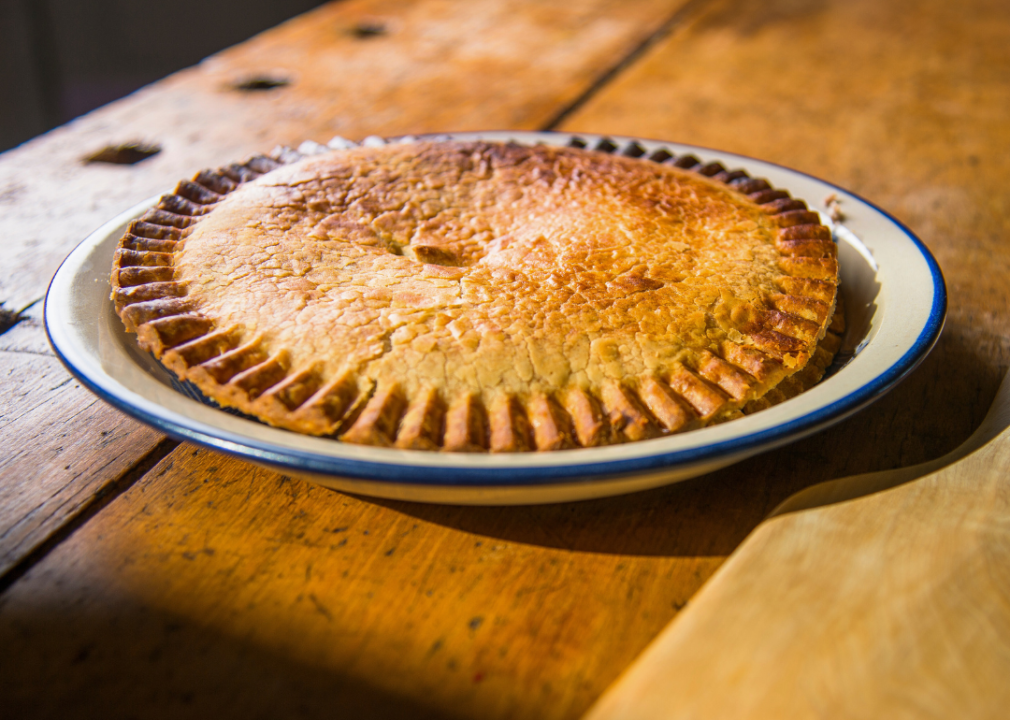
Canva
Robin pie
A whole pie with a flaky, golden crust on a white ceramic plate.
A pie made of robins? Yeah, that’s not something we see on American tables anymore. Especially after robins were protected under the Migratory Bird Treaty Act of 1918. But, before that, this particular pie was a dinner specialty in the 19th century; pie crust layered with beef, fat bacon, and robin.
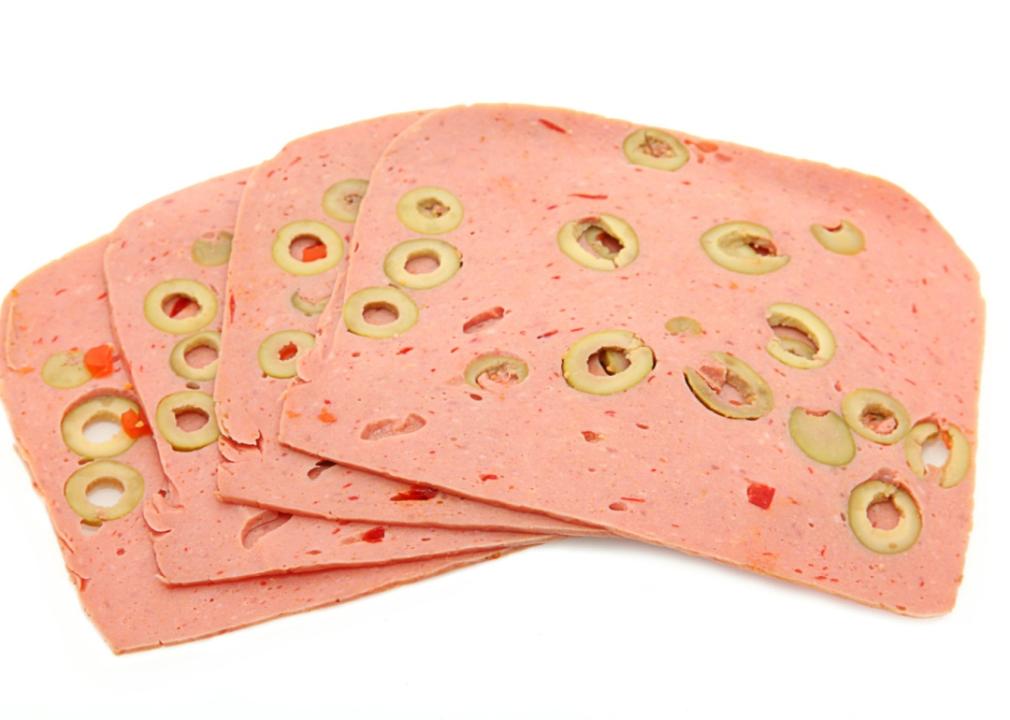
Shutterstock // endeavor
Olive loaf
Four slices of cold cut meat made with chopped olives and pimentos.
Although the olive loaf is similar to Italian mortadella, sliced sausage meat with cubes of pork fat, this former American favorite deli meat is a mixture of pork, chicken, and beef with whole green olives. In recent years, the olive loaf has been associated with more popular cuts like bologna and is not typical to find on mainstream grocery store shelves.
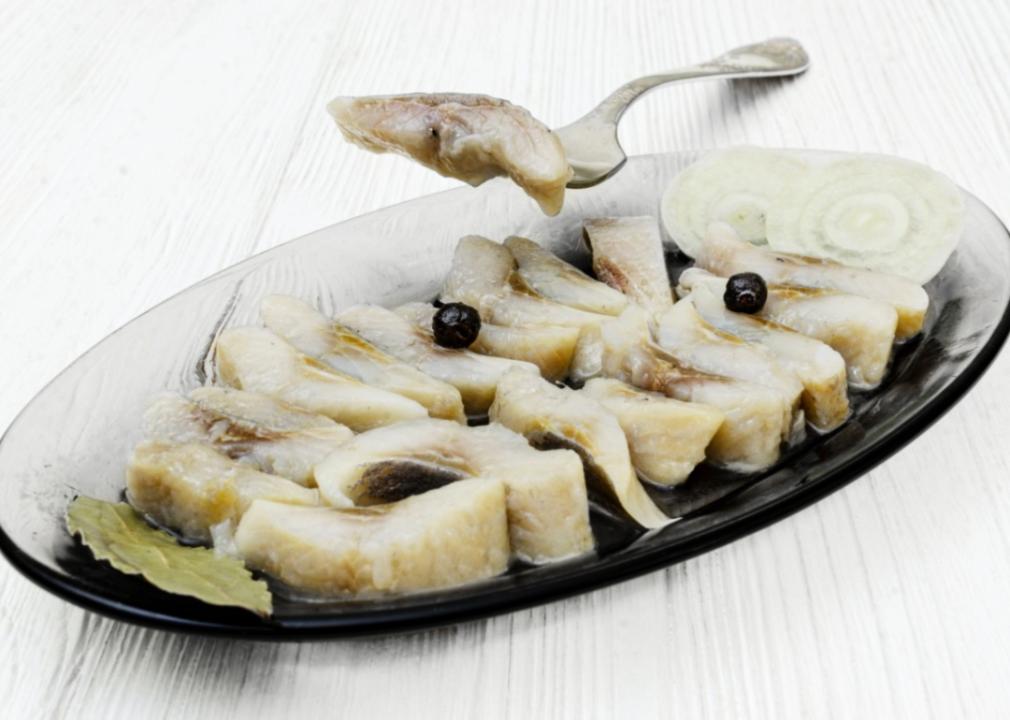
Shutterstock // IevgenGluzhetsky
Pickled herring
A glass serving dish filled with neatly arranged slices of pickled herring, garnished with onion slices and black peppercorns.
Originally a staple in Northern European countries given how easy it was to store and transport fish without it going bad, pickled herring became a staple in America due to European migrants who settled in the Midwest and brought their love for this preserved fish.
However, with the availability of fresh fish in grocery stores and the popularity of other preserved fish products, like canned tuna, or more recently tinned sardines, pickled herring isn’t a popular choice a century later.
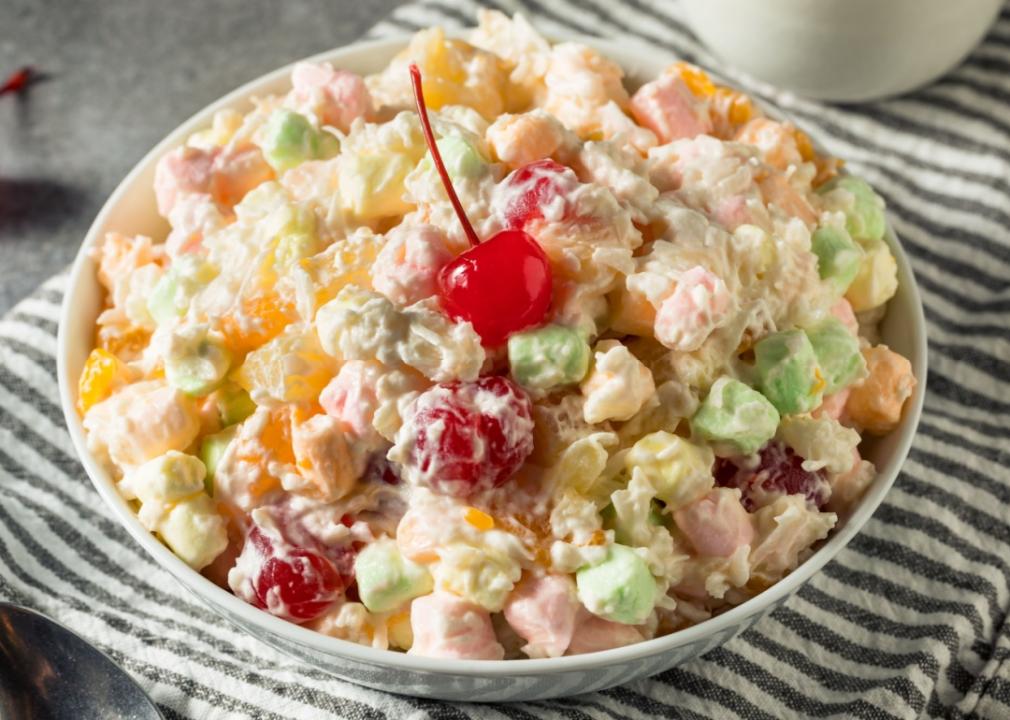
Shutterstock // Brent Hofacker
Ambrosia salad
Various types of cut-up fruit in the bowl, including green grapes, red grapes, strawberries, and marshmallows with a cherry on top.
Dating back to the ancient Greeks, ambrosia salad began appearing in cookbooks in the 1800s when citrus fruit was easier to get ahold of, and soon became an American staple across dinner tables nationwide.
This sweet creamy salad can include canned pineapple, canned mandarin oranges as well as fresh oranges, miniature marshmallows, and coconut. The dish became a staple across Southern states in the 20th century but isn’t seen as much on dinner tables during the 21st.
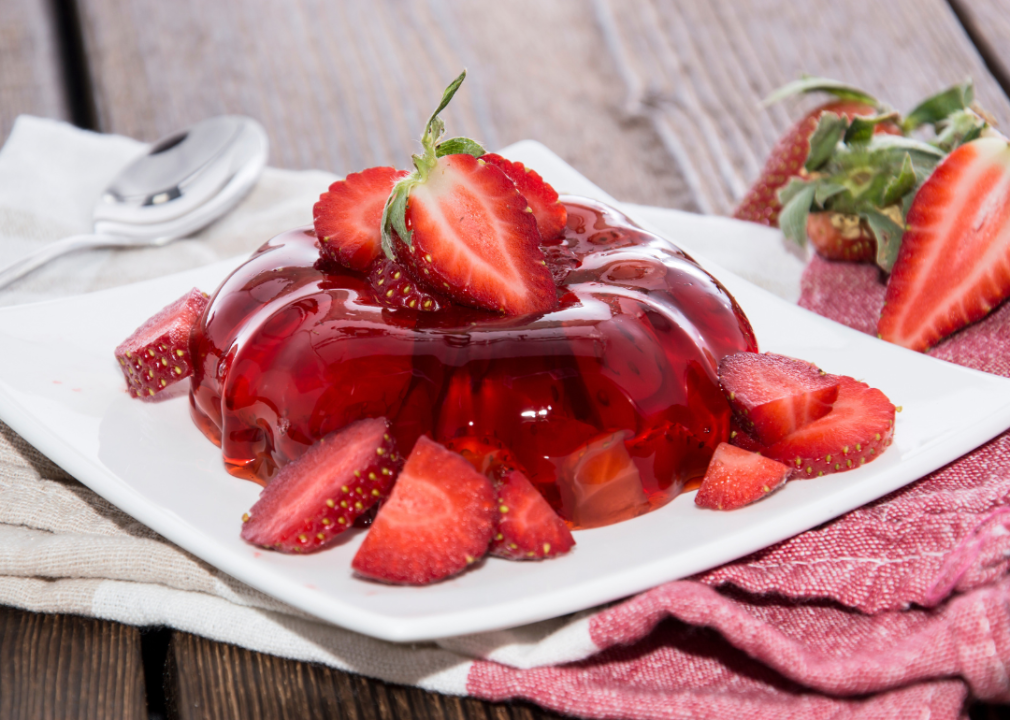
Canva
Jello molds
A plate of red jelly with sliced strawberries inside and on top.
Also referred to as jello salads or gelatin salads, this dinner staple was a traditional side on American tables; a gelatin mold with a mix of savory and sweet ingredients like fruit, grated carrots and other vegetables, cottage and cream cheese, marshmallows and crunchy fillings like pretzels and nuts.
After Jell-O was invented in the late 1800s, making it easy to create gelatin-based foods, the first jello mold popped up in Pennsylvania in 1904 by Mrs. John E. Cook. The jello salad became popular in the 1950s but declined in popularity in the 1960s and 70s.
You may also like: The most popular hot sauces in the US—and the history behind them

Shutterstock // BBA Photography
Succotash
A plate of vegetables, butter beans, butternut squash, sweetcorn and pieces of sausage. The plate sits on top of blue kitchen towel and cutting wooden board.
Once a popular dish dating back to the 17th century, succotash isn’t the type of dinner side you see on the table these days. Evolved from the word msíckquatash from the Narragansett tribe, meaning “boiled corn kernels,” this dish will typically contain a variety of ingredients including onions, tomatoes, lima beans or other legumes, bell peppers, turnips, and sometimes cubed meat like corned beef or pork.
Although this New England staple might not be seen on many tables these days, it can still be a popular fixture in some Southern households.
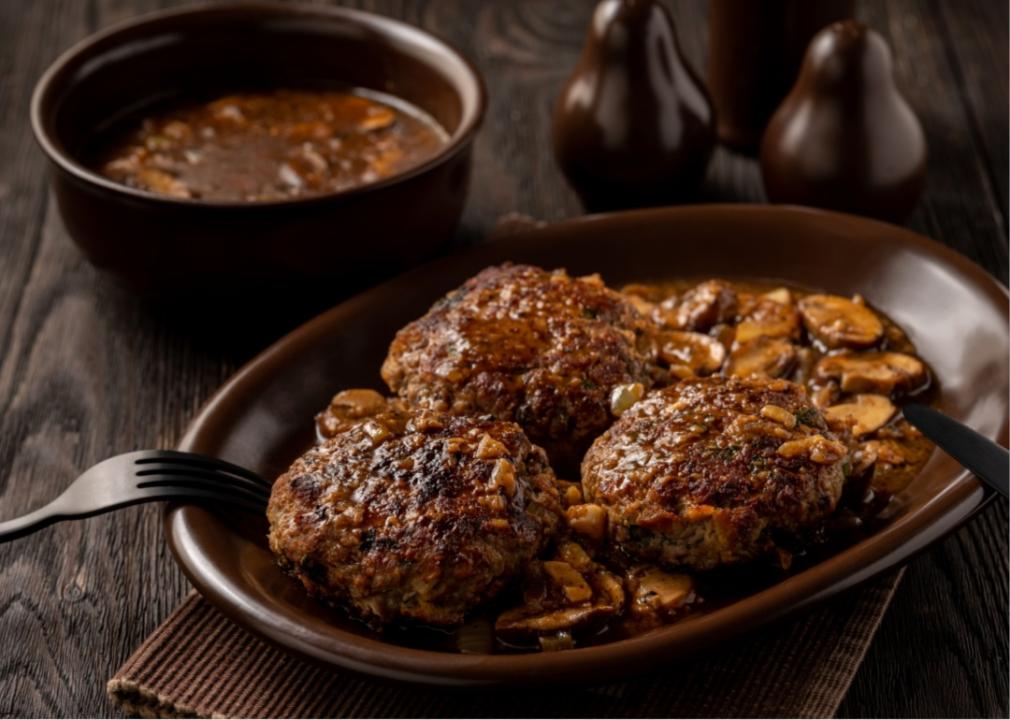
Shutterstock // Cesarz
Salisbury steak
An oval brown plate with flattened patties of brown meat and mushroom sauce.
Although the Salisbury steak became a popular dinner choice and was frequently found in TV dinners, this particular dish was originally presented as a cure for digestive illness for troops during the Civil War.
Dr. James Henry Salisbury founded the dish, an early pioneer of germ theory, and claimed that a diet high in beefsteak and coffee could help cure digestive diseases. (The claim was that beef was easier to digest compared to root vegetables.) It became a common dish served to troops in World War I and became a staple on American tables for decades. This dish is made from ground beef patties smothered in a gravy sauce.
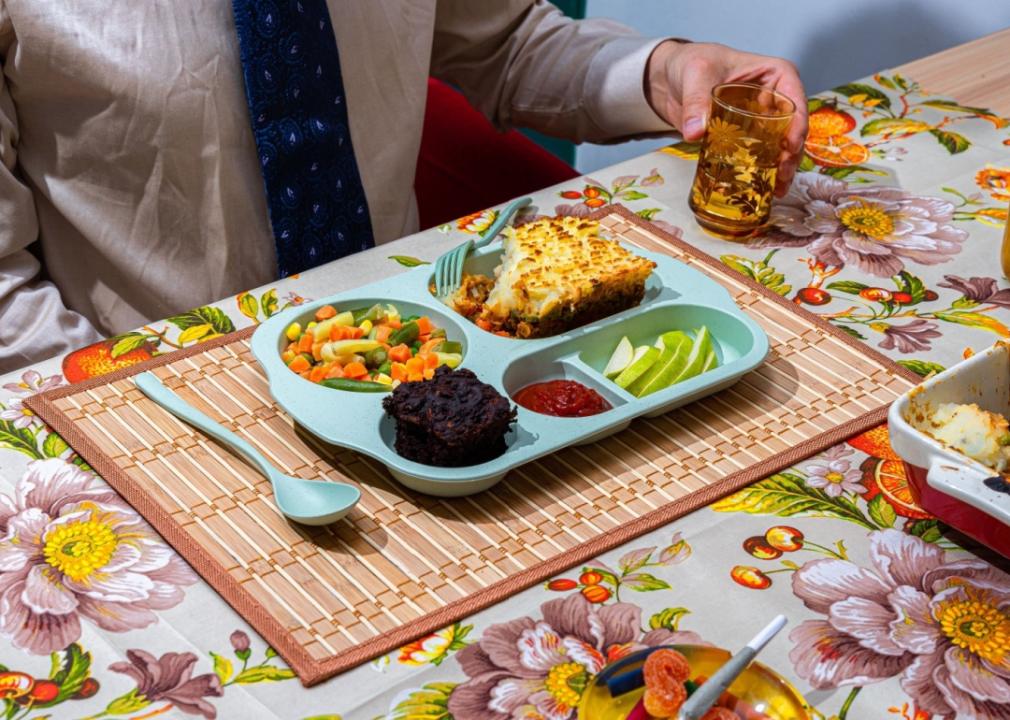
Shutterstock // SnackCreative
TV dinners
A man sitting in front of the plastic blue tray with a meal compartmentalized into sections with mashed potatoes and ground meat, sliced green apple, mixed veggies and a muffin.
Speaking of the Salisbury steak, the once popular TV dinner also isn’t a regular purchase for grocery shoppers anymore. Slightly different from the frozen dinner selection at stores today, TV dinners increased in popularity when television sets became a staple in U.S. households in the late 1950s.
Simply pop the dinner in the oven for less than 20 minutes, and you have a fully cooked, ready-to-eat meal with a main (like meat in a gravy sauce), side dishes (peas, carrots, corn, or anything similar), and sometimes even a dessert. (Chocolate cake!)
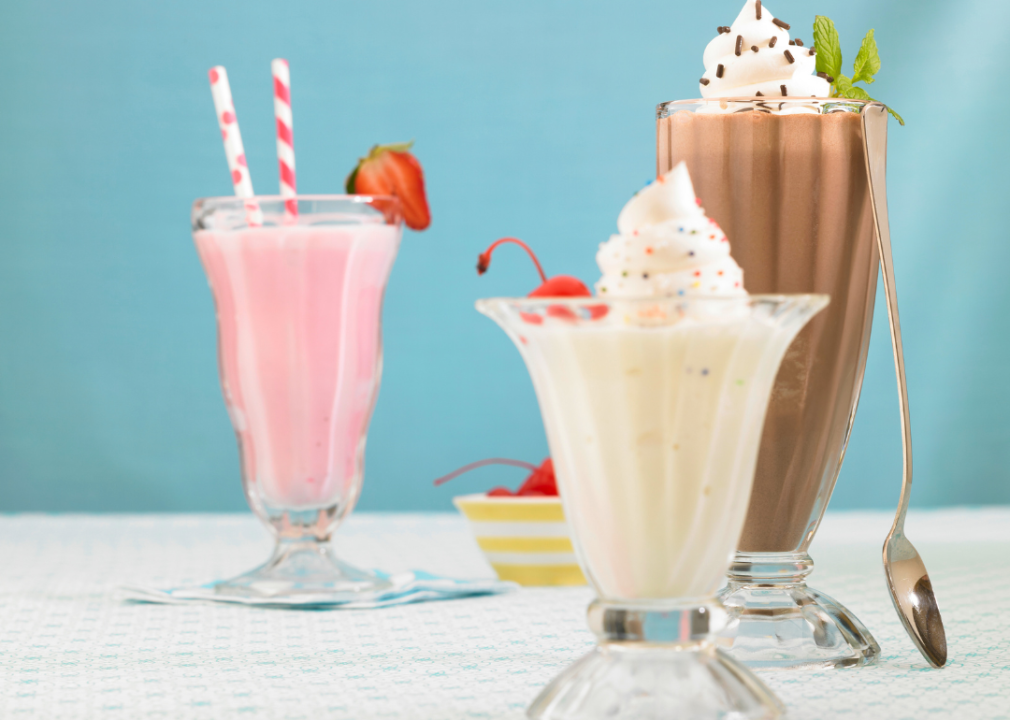
Canva
Malted milkshakes
Three milkshakes topped with whipped cream in tall glasses: the one on the left is light pink, the one in the middle is light brown, and the one on the right is light chocolate brown.
With the decline in interest in ice cream parlors and soda fountains, there was also a decline in the once-popular malted milkshake. After the Horlick brothers created malted milk powder in the 1870s, malted milk was relied on regularly as a food during the Great Depression; a dried tablet made with dry malt extract, wheat extract, and dried milk that was mixed with water.
Malt was eventually used as an ingredient in soda fountains, as a means to lure customers away from drinking alcohol in saloons. However, malted milk options are not regularly seen on abundant grocery shelves anymore.
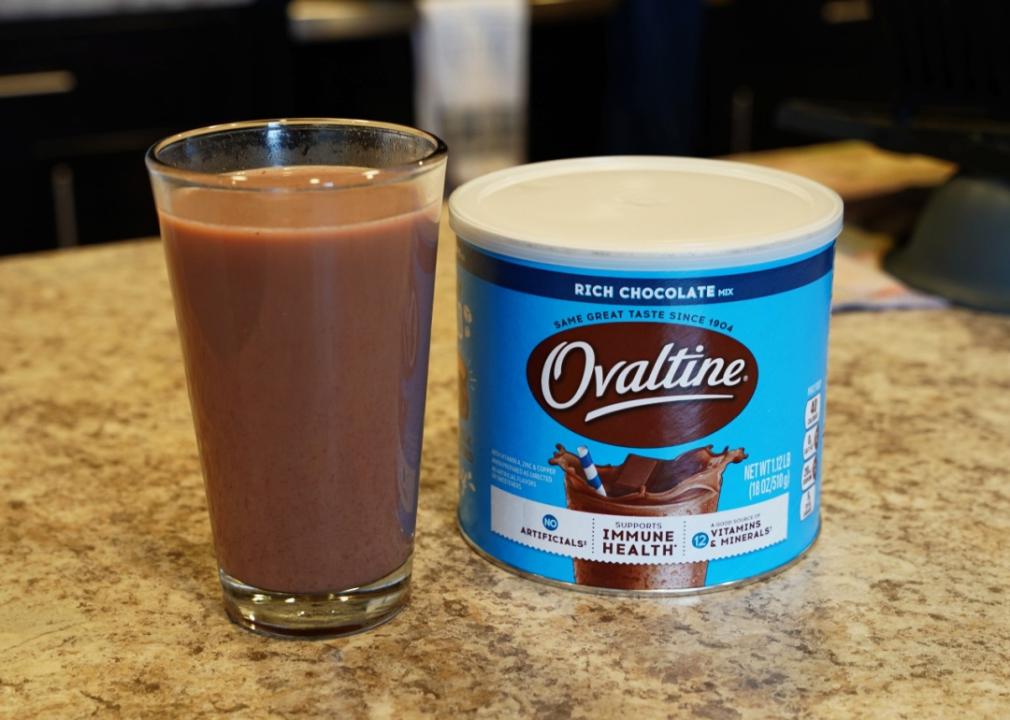
Shutterstock // Aaron of L.A. Photography
Ovaltine
Ovaltine rich chocolate milk mix and a glass of milk sit on kitchen countertop.
Originally founded in Switzerland in 1904 and then sold in the U.S. market as early as 1915, Ovaltine is a chocolate powder made from whey, malt, cocoa, and sugar (corn syrup) that can be prepared in hot or cold milk.
It became a household staple not only for the taste, but also for its nutritional benefits; Ovaltine contains 12 vitamins and minerals, and 40% of the recommended daily intake of calcium (when mixed with eight ounces of milk). The drink was acquired by Nestle in 2007 and isn’t as popular in American pantries as it once was.
You may also like: How plant-based diets affect sleep
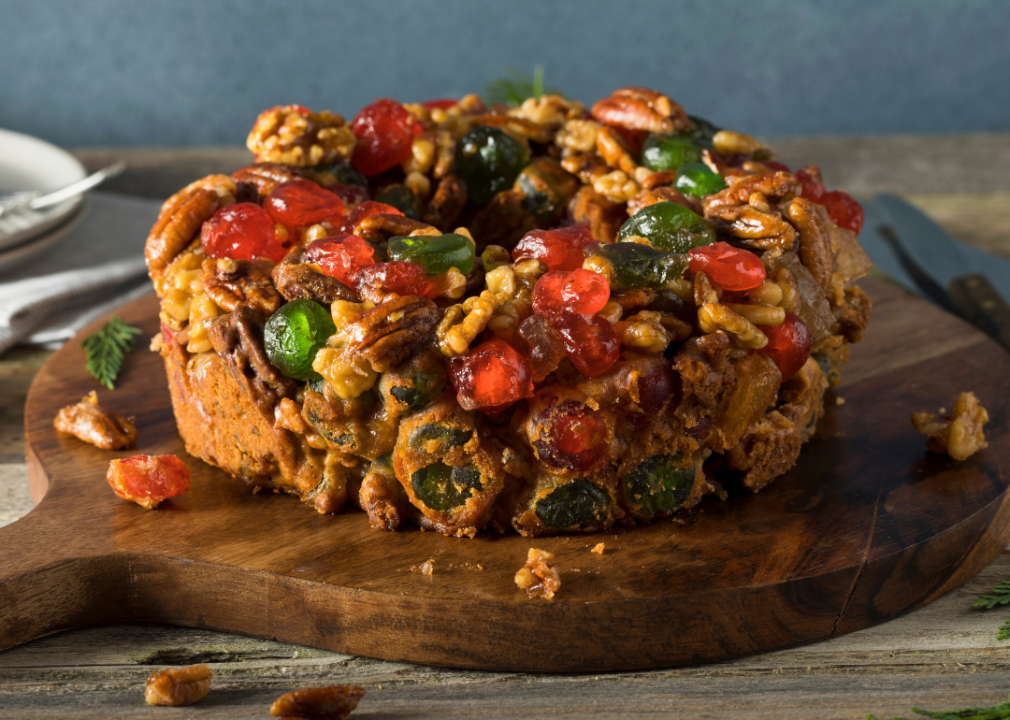
Canva
Fruitcake
A round brown cake on a wooden cutting board with sprinkled nuts and candied fruit.
The fruitcake dates back as early as ancient Roman times, a sweet energy bar made with barley, honey, pomegranate seeds, wine, and dried fruit.
Versions of this delicacy spanned different countries and cultures and are most ubiquitous as a sweet treat to celebrate the holidays. It’s even the chosen cake served at royal weddings! Despite this, tastes changed, and the home-baked allure and popularity of fruitcakes fell with dry mass-produced cakes.
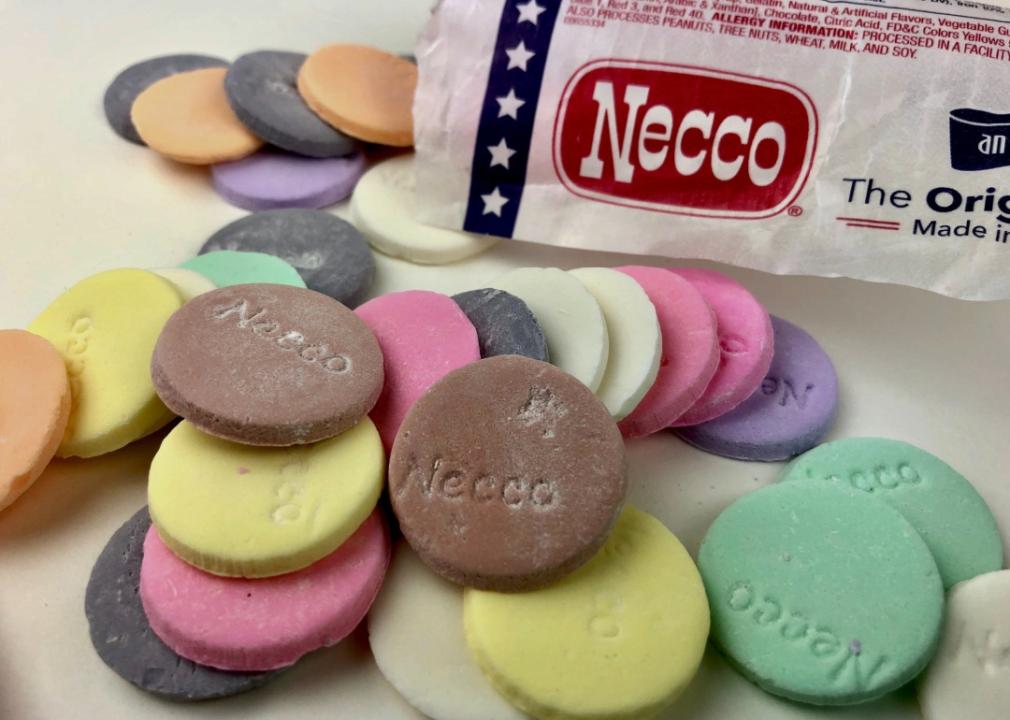
Shutterstock // Jmcanally
Necco wafers
A bag with the words “Necco” surrounded by round colorful cookies with necco lettering on them.
Named for the company where they came from, Necco wafers are small colorful sugar-coated candy discs that were made by the New England Confectionery Company. In 1847, Oliver R. Chase created a machine that pressed and printed candy which helped him to become one of the founding owners of Necco. The wafer was so popular that the U.S. government bought an entire year’s (production) worth of the candy to pack away for soldiers fighting in World War I.
With so many candy options on shelves these days, the Necco wafer is a candy that has been long forgotten, but still beloved by many who used to love snacking on this sugary sweet treat.
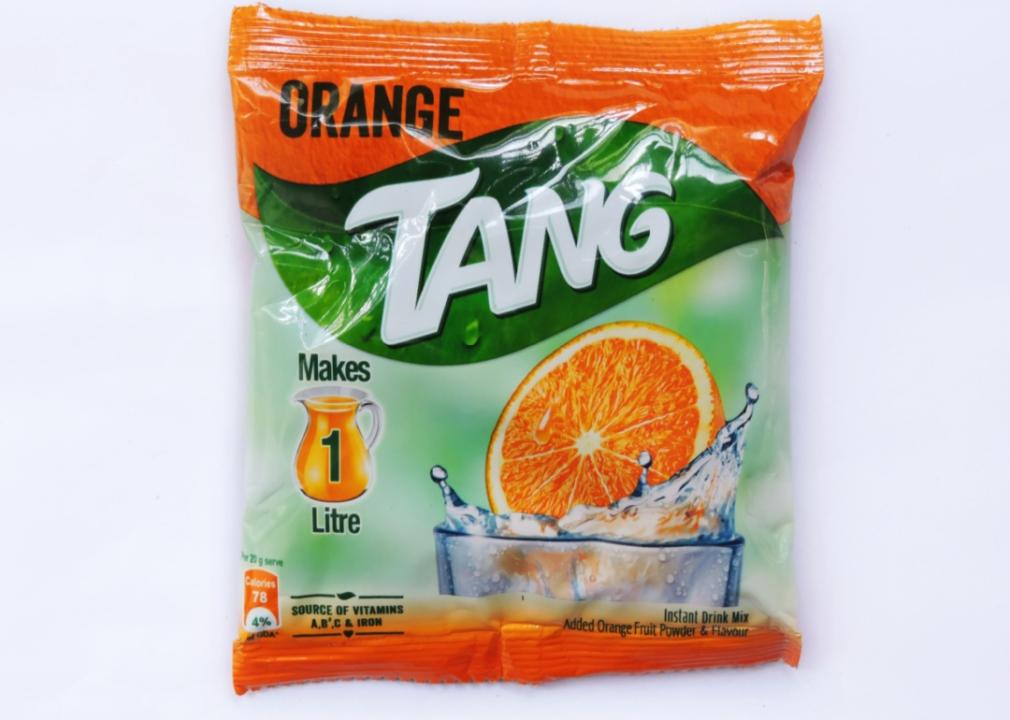
Shutterstock // GYAN PRATIM RAICHOUDHURY
Orange drink
A sealed plastic package of Tang powder.
The space-age drink! Tang debuted in 1957 as a vitamin C-rich breakfast drink by General Foods, but is even more popularly known as the chosen drink for ’60s astronauts, including John Glenn and his journey around Earth in 1962, and NASA’s Gemini mission in 1966. Other orange drinks popped up in the market including SunnyD and Tampico.
While a popular choice at the time, Tang isn’t an everyday beverage typically enjoyed by Americans, even though the product comes in different flavors and is still available to buy in stores.
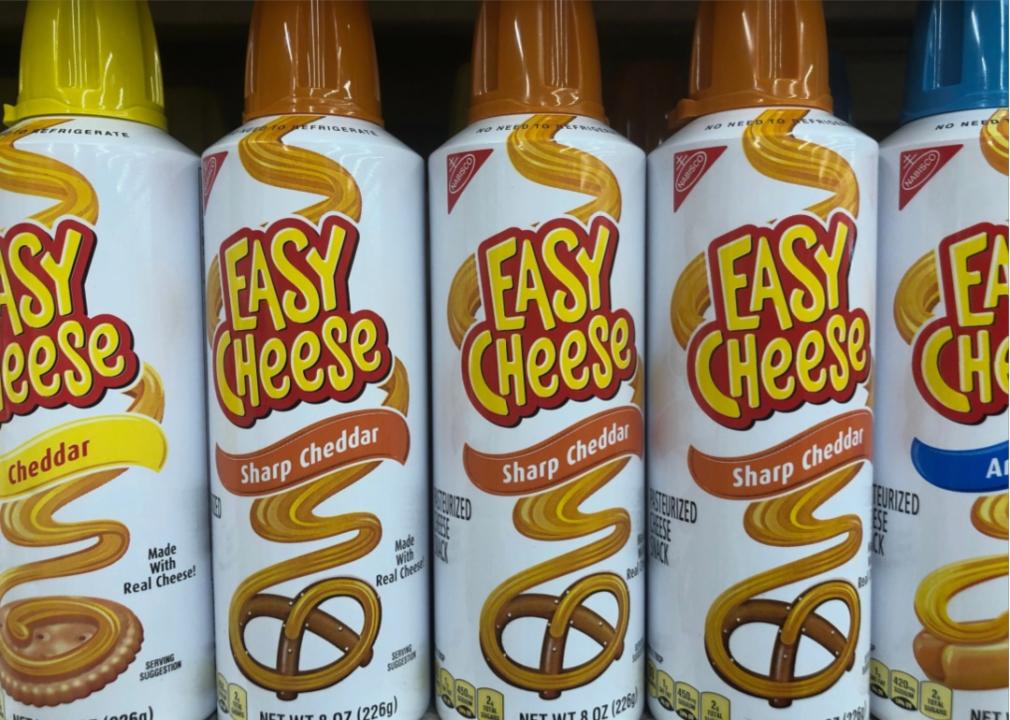
Shutterstock // melissamn
Cheese in a can
Close up of cans of “easy cheese” in various flavors.
After the popularity of jarred cheeses like Cheez Whiz, Nabisco released a “cheese in a can” originally called Snack Mate in 1965, then renamed Easy Cheese in 1984. Served in a can like whipped cream, customers pop open the top and spray cheese on a cracker, on top of sandwiches, or anything else that warrants a drizzle of cheese on top.
The popularity of the cheese resulted in a variety of flavors on the market including pimiento, French onion, cheddar blue cheese, shrimp cocktail, nacho, pizza, sharp cheddar, and cheddar ‘n bacon. However, many flavors were discontinued as popularity declined.
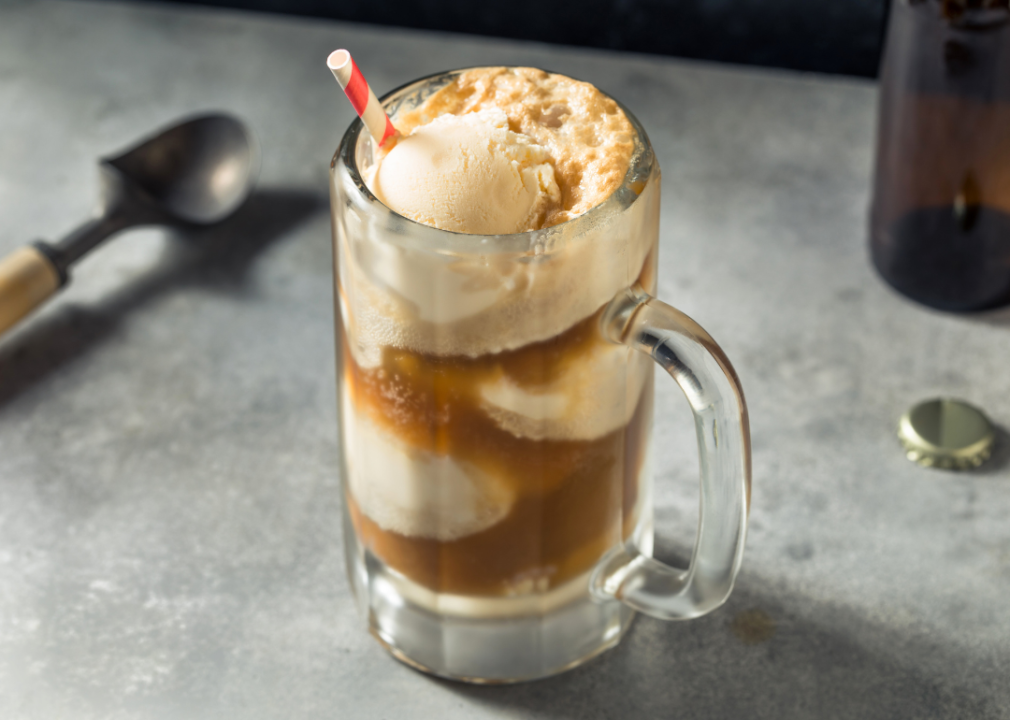
Canva
Ice cream sodas
Clear glass mug with brown liquid and ice cream scoops floating.
During its heyday in the early 20th century, thousands of soda fountains were sprinkled across the nation, a place to grab a sweet soda beverage with scoops of ice cream and clever homemade syrups.
The ice cream soda was originally founded by Robert M. Green in 1874, who sold fountain soda with scoops of ice cream when he ran out of sweet cream. His clever substitute became a nationwide staple for decades until the popularity of ice cream sodas began to fade thanks to the introduction of fast-food soda fountains in the 1970s.
Story editing by Cynthia Rebolledo. Copy editing by Robert Wickwire. Photo selection by Ania Antecka.
You may also like: What does the best coffee from 10 regions around the world taste like?
